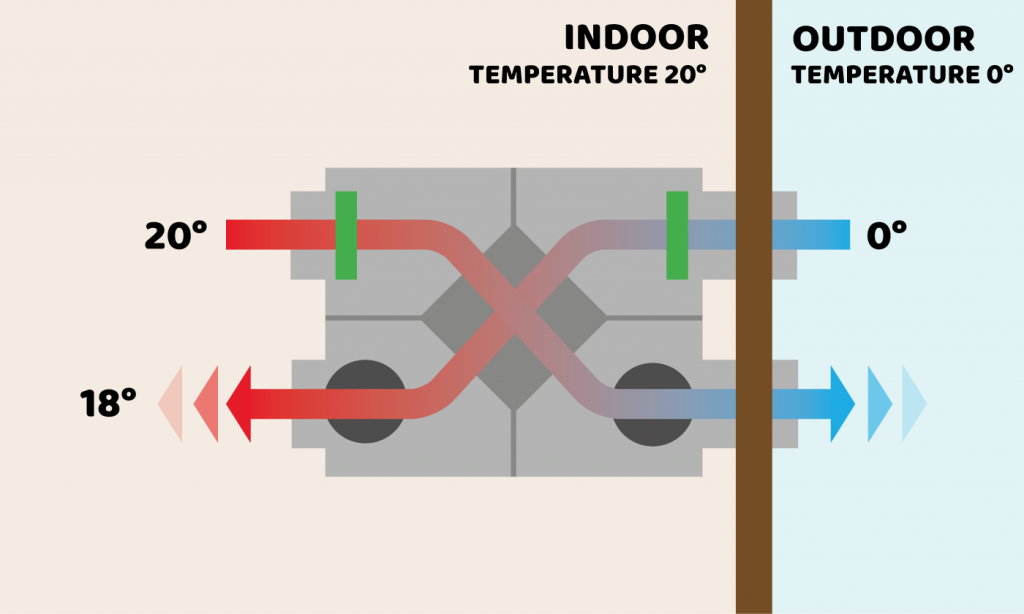Discovering the Benefits of Heat Recovery Ventilation for Power Performance in Residences
Heat Recovery Ventilation (HRV) systems supply homeowners a useful strategy to improving energy performance. By recovering warm from outward bound air, these systems can significantly reduce heating & cooling expenses. Additionally, they give a constant supply of fresh air, boosting indoor air quality and comfort degrees. As house owners take into consideration sustainable options, comprehending the nuances of HRV systems becomes progressively important. What factors should one evaluate prior to making such a financial investment?
Understanding Heat Recovery Ventilation Equipments

Just How HRV Enhances Indoor Air Top Quality

Power Savings: The Monetary Advantages of HRV
Maximizing power efficiency, heat recovery ventilation (HRV) systems provide significant economic advantages for home owners. By recovering and recycling warm from exhaust air, HRVs considerably lower cooling and heating expenses. This modern check these guys out technology can lead to energy financial savings of as much as 30%, relying on climate and use patterns. Property owners commonly see lowered utility bills shortly after setup, making HRVs a financially wise financial investment gradually. Additionally, numerous regions give incentives or discounts for energy-efficient upgrades, even more boosting the financial appeal. As power prices remain to climb, the cost-effectiveness of HRVs becomes significantly clear. On the whole, the consolidation of HRV systems not only advertises energy efficiency yet also contributes to lasting financial cost savings for families.
The Ecological Effect of Heat Recovery Ventilation
A significant environmental benefit of heat recovery ventilation (HRV) systems exists in their ability to minimize general power consumption. By redeeming heat from exhaust air and moving it to inbound fresh air, HRV systems decrease the demand for energy-intensive heating and cooling down techniques. This decrease in power demand adds to reduce greenhouse gas emissions, as much less fossil gas is needed to maintain comfortable interior temperature levels. In addition, HRV systems boost interior air top quality by successfully trading stagnant air with fresh outside air, minimizing reliance on mechanical air conditioning systems that can harm the environment. Overall, the application of HRV systems supports lasting living methods and lines up with international efforts to deal with environment change by promoting energy efficiency in residential setups.
Selecting the Right HRV System for Your Home
Exactly how can property owners assure they choose site link the appropriate heat recovery ventilation (HRV) system for their demands? Initially, they must evaluate their home's size and design, as these elements affect airflow demands. Next, reviewing the system's performance rankings is vital, as higher scores suggest much better performance and energy financial savings. Home owners must additionally take into consideration installment and upkeep expenses, contrasting various brand names and models for worth. In addition, it's important to examine noise levels, as some systems run even more quietly than others. Consulting with HVAC experts can supply customized recommendations based upon specific home problems. Lastly, checking out customer reviews and warranties can help in making an educated decision, guaranteeing that the selected HRV system successfully improves interior air high quality and power effectiveness.
Regularly Asked Questions

Exactly how Usually Should I Clean or Keep My HRV System?
The frequency of cleaning or preserving a warm recuperation ventilation (HRV) system commonly depends on usage and environmental factors. Generally, it is suggested to do upkeep every 6 months to guarantee peak efficiency and air top quality.

Can HRV Solutions Help In Reducing Humidity Degrees Indoors?
HRV systems can effectively minimize interior moisture levels by exchanging stale, humid air with fresh, drier air from outdoors. HRV Heat Recovery Ventilation. This process helps keep a well balanced indoor atmosphere, enhancing convenience and avoiding moisture-related issues
What Is the Life expectancy of a Common HRV System?
The lifespan of a regular check this heat recovery ventilation (HRV) system differs, normally lasting between 10 to 15 years. Routine upkeep can prolong its performance and functional life, ensuring peak efficiency throughout its usage period.
Exist Any Sound Worry About HRV Systems?
Noise interest in HRV systems can emerge, especially from fan procedure. Lots of modern-day units are designed to decrease sound degrees, guaranteeing they operate quietly while preserving effectiveness, which resolves potential disturbances in living atmospheres.
Can I Install an HRV System Myself, or Do I Required an Expert?
The specific contemplated whether to set up the heat recovery ventilation (HRV) system directly or work with a specialist. Normally, while DIY installation is feasible, proficiency assurances correct capability and compliance with neighborhood building ordinance, boosting system performance.